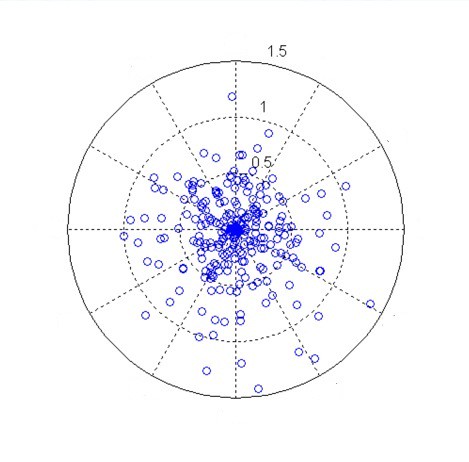603Country
New member
I'm just now beginning the comparison test between several types of case resizing dies for the 223, and the resultant accuracy from each. Ruger Hawkeye stainless in a Hogue stock with full aluminum bedding channel. Leupold VX2 6-18 scope. Nosler 40 gr BT. H335 powder. CCI BR4 primers. Nosler cases that have been highly prepped, which included neck turning. Timney trigger. RCBS competition seating die. Front and rear bags on a sturdy shooting bench.
As I've said before, I'm doing this just for me, but I'll share my results with ya'll. I can't and won't say that what works best for me is what will work best for you. I'll just say what my results were and you can do what you will with that info.
Today, in just a preliminary test to see if I was setting up the Lee Collet Die and the Redding Type S FL bushing die properly, I loaded up 3 rounds using each. Yes, I know that it isn't statistically significant having just the 3 rounds, but I'm sure you'll understand when I tell you that I just had to try them out.
First were 3 rounds that were previously loaded that I think were neck sized. Nice group of about 3/4 inch, with two in one hole. Just barrel foulers.
Second were 3 rounds using the Redding non-bushing FL die. Group was about an inch. Nothing special.
Third were 3 rounds neck sized with the Redding non-bushing die. Maybe a touch smaller group than from the non bushing FL die. Again...nothing special.
Fourth were 3 rounds sized with the Lee Collet neck sizing die. Wow! All holes touched and were essentially a one-holer, though the group was elongated and not round.
Fifth were the 3 rounds from the Redding Type S FL Bushing Die. I used it with the expander ball removed. The group was disappointing, being just about an inch. I'm going to try that one again right now, with a cold barrel.
So the statistically insignificant first 'abbreviated' test win goes to the Lee Collet Die. Now I'll go clean the rifle and start loading the rounds for the full test. I'll shoot one 15 round group with loads made with each resizing die, then clean the rifle and start on the next group. I'll stretch out all the shooting time to keep with a warm but not hot barrel. Each group will be begun with a cold barrel and one fouling shot, then the 15 rounds. Unless I have a case failure, all groups of 15 will be shot using the exact same cases.
I've been wanting to do this for a long time. To be honest, I just could not believe that the rather cheap Lee Collet Die could really work that well. If the prelim testing proves out in the full testing, I'll be ordering several more of those Collet Dies.
As I've said before, I'm doing this just for me, but I'll share my results with ya'll. I can't and won't say that what works best for me is what will work best for you. I'll just say what my results were and you can do what you will with that info.
Today, in just a preliminary test to see if I was setting up the Lee Collet Die and the Redding Type S FL bushing die properly, I loaded up 3 rounds using each. Yes, I know that it isn't statistically significant having just the 3 rounds, but I'm sure you'll understand when I tell you that I just had to try them out.
First were 3 rounds that were previously loaded that I think were neck sized. Nice group of about 3/4 inch, with two in one hole. Just barrel foulers.
Second were 3 rounds using the Redding non-bushing FL die. Group was about an inch. Nothing special.
Third were 3 rounds neck sized with the Redding non-bushing die. Maybe a touch smaller group than from the non bushing FL die. Again...nothing special.
Fourth were 3 rounds sized with the Lee Collet neck sizing die. Wow! All holes touched and were essentially a one-holer, though the group was elongated and not round.
Fifth were the 3 rounds from the Redding Type S FL Bushing Die. I used it with the expander ball removed. The group was disappointing, being just about an inch. I'm going to try that one again right now, with a cold barrel.
So the statistically insignificant first 'abbreviated' test win goes to the Lee Collet Die. Now I'll go clean the rifle and start loading the rounds for the full test. I'll shoot one 15 round group with loads made with each resizing die, then clean the rifle and start on the next group. I'll stretch out all the shooting time to keep with a warm but not hot barrel. Each group will be begun with a cold barrel and one fouling shot, then the 15 rounds. Unless I have a case failure, all groups of 15 will be shot using the exact same cases.
I've been wanting to do this for a long time. To be honest, I just could not believe that the rather cheap Lee Collet Die could really work that well. If the prelim testing proves out in the full testing, I'll be ordering several more of those Collet Dies.
Last edited:


